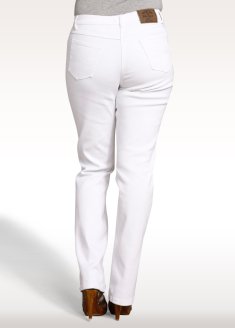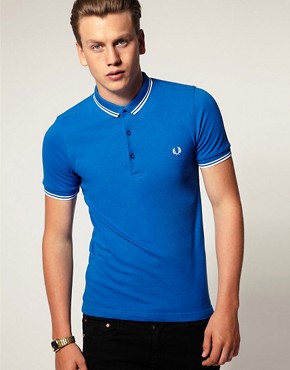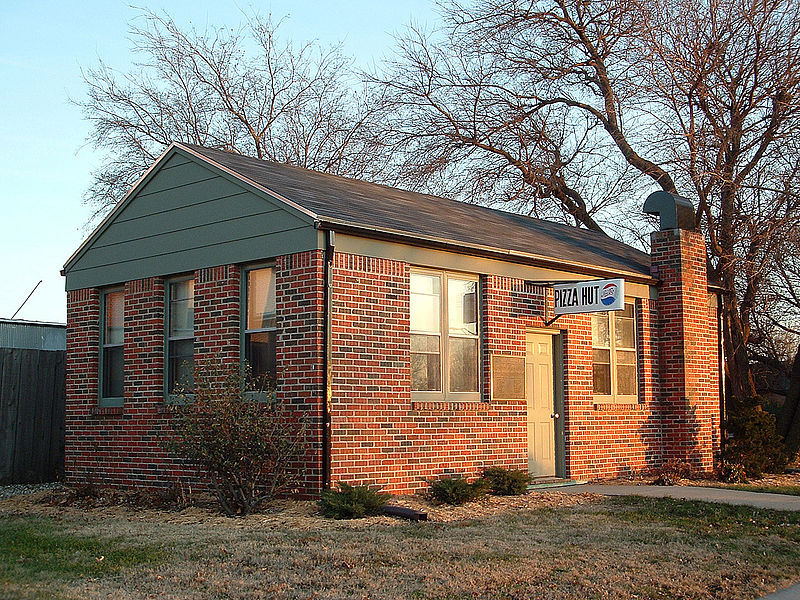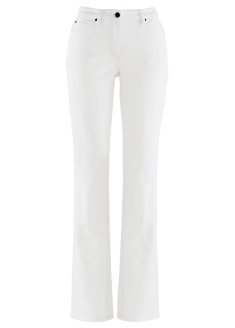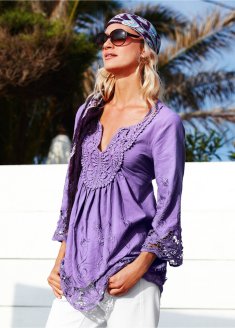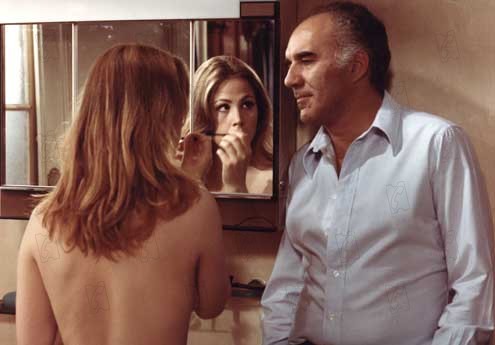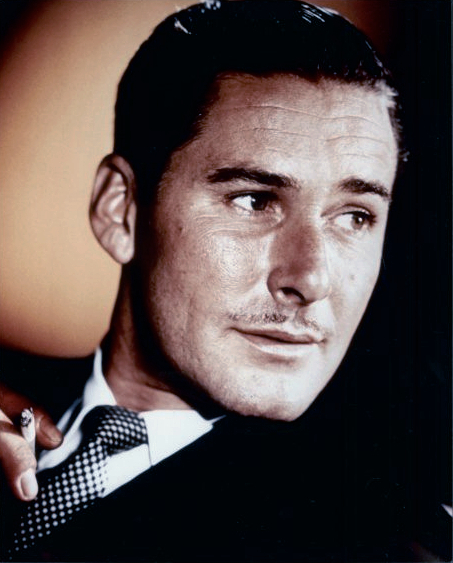
Wednesday 31 August 2011
Tuesday 30 August 2011
meatballs from italy
Meatballs, 
500g Lean Minced Beef
2 cloves of garlic, finely chopped
1 medium onion, finely chopped
1 onion peeled and finely chopped
A pinch of chilli pepper

1 medium egg yolk
Salt, pepper
One packet of spaghetti
For the Tomato Sauce
Olive oil
One jar of tomato and basil sauce
A dash of balsamic vinegar
A dash of red wine (optional)
Half a teaspoon of sugar
Method

1. Heat the olive oil in a large frying pan over a quite low temperature. Add the onion and garlic and fry for 10 minutes until softened, stirring regularly. Tip into a large mixing
 bowl and leave to cool. Add minced beef, chilli pepper, salt and black pepper, plus an egg yolk.
bowl and leave to cool. Add minced beef, chilli pepper, salt and black pepper, plus an egg yolk.2. Combine all the ingredients for meatballs and roll into small size meatballs.
3. Fry in the olive oil to brown edges. In a saucepan add the tomato sauce with olive oil, balsamic vinegar and any dried or fresh herbs you like (basil, oregano, parsley). Add the meatballs to the tomato sauce and cook for another 10-15 minutes.
saffron hill mob

Saffron Hill is the name of a street in the south eastern corner of the London Borough of Camden, between Farringdon 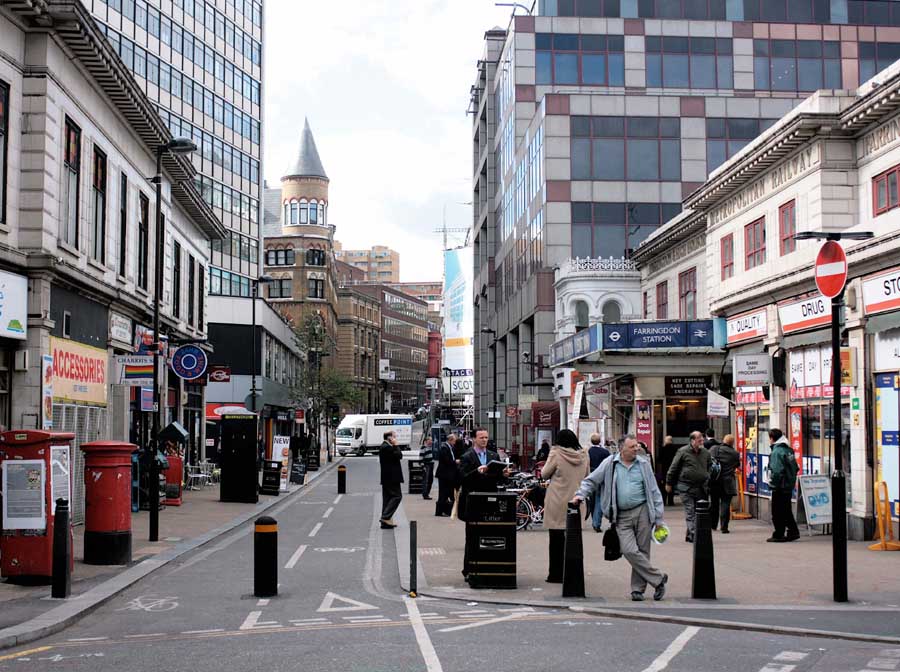 and Hatton Garden. The name of the street derives from the fact that it was at one time part of an estate on which saffron grew.
and Hatton Garden. The name of the street derives from the fact that it was at one time part of an estate on which saffron grew.
 and Hatton Garden. The name of the street derives from the fact that it was at one time part of an estate on which saffron grew.
and Hatton Garden. The name of the street derives from the fact that it was at one time part of an estate on which saffron grew.
In 1850 it was described as a squalid neighbourhood, the home of paupers and thieves. In Charles Dickens's 1837 novel "Oliver Twist" (Chapter 8), the Artful Dodger leads Oliver to Fagin's den in Field Lane , "In such a neighbourhood...stands Jacob's Island, surrounded by a muddy ditch, six or eight feet deep and fifteen or twenty wide when the tide is in, once called Mill Pond, but known in these days as Folly Ditch. It is a creek of inlet from the Thames, and can always be filled at high water by opening the sluices...At such times, a stranger, looking from one of the wooden bridges thrown across it at Mill-lane, will see the inhabitants of the houses on either side lowering from their back-doors and windows, buckets, pails, domestic utensils of all kinds, in which to haul the water up; and when his eye is turned from these operations to the houses themselves, his utmost astonishment will be excited by the scene before him. Crazy wooden galleries common to the backs of half a dozen houses, with holes from which to look upon the slime beneath; windows, broken and patched: with poles thrust out, on which to dry the linen that is never there; rooms so small, so filthy, so confined, that the air would seem too tainted even for the dirt and squalor which they shelter; wooden chambers thrusting themselves out above the mud, and threatening to fall into it-as some have done; dirt-besmeared walls and decaying foundations; every repulsive lineament of poverty, every loathsome indication of filth, rot, and garbage; all these ornament the banks of Folly Ditch
, "In such a neighbourhood...stands Jacob's Island, surrounded by a muddy ditch, six or eight feet deep and fifteen or twenty wide when the tide is in, once called Mill Pond, but known in these days as Folly Ditch. It is a creek of inlet from the Thames, and can always be filled at high water by opening the sluices...At such times, a stranger, looking from one of the wooden bridges thrown across it at Mill-lane, will see the inhabitants of the houses on either side lowering from their back-doors and windows, buckets, pails, domestic utensils of all kinds, in which to haul the water up; and when his eye is turned from these operations to the houses themselves, his utmost astonishment will be excited by the scene before him. Crazy wooden galleries common to the backs of half a dozen houses, with holes from which to look upon the slime beneath; windows, broken and patched: with poles thrust out, on which to dry the linen that is never there; rooms so small, so filthy, so confined, that the air would seem too tainted even for the dirt and squalor which they shelter; wooden chambers thrusting themselves out above the mud, and threatening to fall into it-as some have done; dirt-besmeared walls and decaying foundations; every repulsive lineament of poverty, every loathsome indication of filth, rot, and garbage; all these ornament the banks of Folly Ditch the southern extension of Saffron Hill: "a dirty and more wretched place he [Oliver] had never seen. The street was very narrow and muddy, and the air was impregnated with filthy odours".
the southern extension of Saffron Hill: "a dirty and more wretched place he [Oliver] had never seen. The street was very narrow and muddy, and the air was impregnated with filthy odours".
 , "In such a neighbourhood...stands Jacob's Island, surrounded by a muddy ditch, six or eight feet deep and fifteen or twenty wide when the tide is in, once called Mill Pond, but known in these days as Folly Ditch. It is a creek of inlet from the Thames, and can always be filled at high water by opening the sluices...At such times, a stranger, looking from one of the wooden bridges thrown across it at Mill-lane, will see the inhabitants of the houses on either side lowering from their back-doors and windows, buckets, pails, domestic utensils of all kinds, in which to haul the water up; and when his eye is turned from these operations to the houses themselves, his utmost astonishment will be excited by the scene before him. Crazy wooden galleries common to the backs of half a dozen houses, with holes from which to look upon the slime beneath; windows, broken and patched: with poles thrust out, on which to dry the linen that is never there; rooms so small, so filthy, so confined, that the air would seem too tainted even for the dirt and squalor which they shelter; wooden chambers thrusting themselves out above the mud, and threatening to fall into it-as some have done; dirt-besmeared walls and decaying foundations; every repulsive lineament of poverty, every loathsome indication of filth, rot, and garbage; all these ornament the banks of Folly Ditch
, "In such a neighbourhood...stands Jacob's Island, surrounded by a muddy ditch, six or eight feet deep and fifteen or twenty wide when the tide is in, once called Mill Pond, but known in these days as Folly Ditch. It is a creek of inlet from the Thames, and can always be filled at high water by opening the sluices...At such times, a stranger, looking from one of the wooden bridges thrown across it at Mill-lane, will see the inhabitants of the houses on either side lowering from their back-doors and windows, buckets, pails, domestic utensils of all kinds, in which to haul the water up; and when his eye is turned from these operations to the houses themselves, his utmost astonishment will be excited by the scene before him. Crazy wooden galleries common to the backs of half a dozen houses, with holes from which to look upon the slime beneath; windows, broken and patched: with poles thrust out, on which to dry the linen that is never there; rooms so small, so filthy, so confined, that the air would seem too tainted even for the dirt and squalor which they shelter; wooden chambers thrusting themselves out above the mud, and threatening to fall into it-as some have done; dirt-besmeared walls and decaying foundations; every repulsive lineament of poverty, every loathsome indication of filth, rot, and garbage; all these ornament the banks of Folly Ditch the southern extension of Saffron Hill: "a dirty and more wretched place he [Oliver] had never seen. The street was very narrow and muddy, and the air was impregnated with filthy odours".
the southern extension of Saffron Hill: "a dirty and more wretched place he [Oliver] had never seen. The street was very narrow and muddy, and the air was impregnated with filthy odours".
Saffron Hill is mentioned in the Arthur Conan Doyle Sherlock Holmes story "The Adventure of the Six Napoleons", as the Italian Quarter where the Venucci family can be found
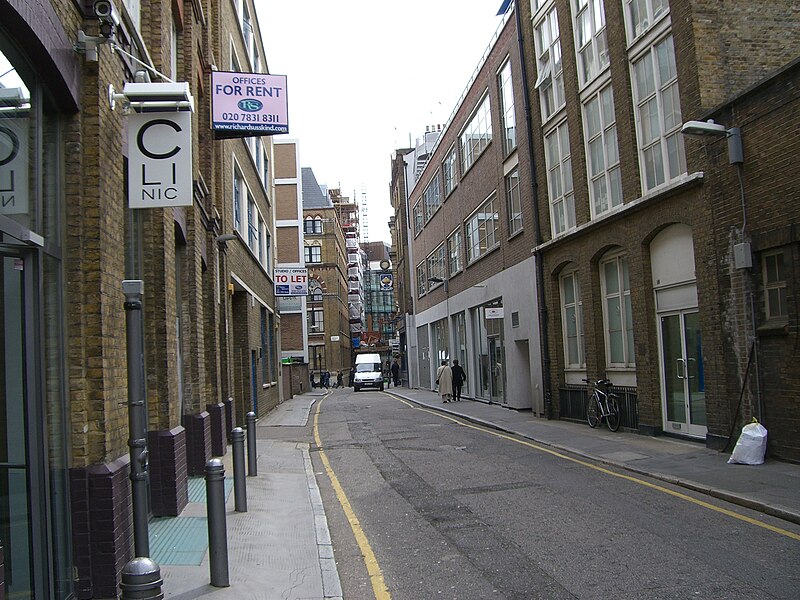
Saffron Hill formed a liberty which became part of the County of London in 1889. It was abolished in 1900 and formed part of the Metropolitan Borough of Holborn until 1965.
The main focus of these gangs eventually became the chaotic racetracks, especially Epsom and Ascot, at which unlicensed bookmakers regularly fleeced customers. These bookies used the gangs as protection (from angry customers and other bookies) and the Brummagem Boys, led by the clever and charismatic Billy Kimber, had fingers in this protection racket all over the country.
The Brummagem Boys had alliances with the Hoxton Gang and the Leeds Mob and used these alliances to spread their influence further. Their main rivals the Italian Mob, led by Charles ‘Darby’ Sabini, also had their eyes on the racetracks and this rivalry led to one of the most notorious and brutal events of the 1920s.
On the first day of the Epsom Derby in 1921, the Italian Mob were known to be visiting the racetrack. The Brummagem Boys and the Leeds Mob had made their way to the racetrack separately to confront the Italians but the presence of so many Metropolitan Police officers made them think again. Leaving by car, the Brummagem Boys set up an ambush on the route back towards London and waited for the Italians to drive by.
When two cars appeared on the road near the village of Stoneleigh in Surrey, the Brummagems blocked the road, rushed from behind the bushes and attacked the cars with bricks, hammers and other metal implements. Dragging the occupants from the car, they proceeded to batter and slash the men with knives until it looked like someone would be killed. Suddenly one of the injured men recognised the attackers and realised the error, shouting “Stop it, we’re the Leeds Mob” – the Brummagems had ambushed and attacked the Leeds Mob rather than the Italians. By this time however the attack had taken on a life of its own and did not stop until the Brummagem Boys were satisfied.
By 1921 the police were becoming more effective in tracking down and prosecuting the gangs and when the Brummagems car was spotted outside the George and Dragon pub near Richmond Park in London, several officers were sent to investigate. Unusually, one of the officers, Sergeant Dawson, was armed with a revolver and it proved vital. When the gang saw the police they attempted to rush Dawson but he drew his weapon and calmly said “I shall shoot the first man who tries to escape!“ Twenty three gang members were sentenced to prison terms in the ensuing trial.
Darby sabani born saffron hill
If we sometimes think of organised crime as a feature of the modern day underworld, occasionally it’s worth remembering that it has in fact been with us for longer than most of us realise. In this series of posts we’ll have a look at some of the gangs who burnt brightly in their era but no longer exist.The Brummagem Boys
In post-First World War England (1914-1918), crime was rife and threatening to spiral out of control. Into this mix a number of regional criminal enterprises emerged to take advantage of the situation. London had the Hoxton Gang, the Italian Mob and the Bethnal Green Mob, Yorkshire had the Leeds Mob and Birmingham had its notorious Brummagem Boys.The main focus of these gangs eventually became the chaotic racetracks, especially Epsom and Ascot, at which unlicensed bookmakers regularly fleeced customers. These bookies used the gangs as protection (from angry customers and other bookies) and the Brummagem Boys, led by the clever and charismatic Billy Kimber, had fingers in this protection racket all over the country.
The Brummagem Boys had alliances with the Hoxton Gang and the Leeds Mob and used these alliances to spread their influence further. Their main rivals the Italian Mob, led by Charles ‘Darby’ Sabini, also had their eyes on the racetracks and this rivalry led to one of the most notorious and brutal events of the 1920s.
On the first day of the Epsom Derby in 1921, the Italian Mob were known to be visiting the racetrack. The Brummagem Boys and the Leeds Mob had made their way to the racetrack separately to confront the Italians but the presence of so many Metropolitan Police officers made them think again. Leaving by car, the Brummagem Boys set up an ambush on the route back towards London and waited for the Italians to drive by.
When two cars appeared on the road near the village of Stoneleigh in Surrey, the Brummagems blocked the road, rushed from behind the bushes and attacked the cars with bricks, hammers and other metal implements. Dragging the occupants from the car, they proceeded to batter and slash the men with knives until it looked like someone would be killed. Suddenly one of the injured men recognised the attackers and realised the error, shouting “Stop it, we’re the Leeds Mob” – the Brummagems had ambushed and attacked the Leeds Mob rather than the Italians. By this time however the attack had taken on a life of its own and did not stop until the Brummagem Boys were satisfied.
By 1921 the police were becoming more effective in tracking down and prosecuting the gangs and when the Brummagems car was spotted outside the George and Dragon pub near Richmond Park in London, several officers were sent to investigate. Unusually, one of the officers, Sergeant Dawson, was armed with a revolver and it proved vital. When the gang saw the police they attempted to rush Dawson but he drew his weapon and calmly said “I shall shoot the first man who tries to escape!“ Twenty three gang members were sentenced to prison terms in the ensuing trial.
joan bennett
Bennett started getting better roles in such costume dramas as The Man in the Iron Mask and The Son of Monte Christo. The turning point in her career came in 1941 when legendary director Fritz Lang cast her in Man Hunt. Playing a cockney streetwalker helping Walter Pidgeon escape the Nazis, Bennett was charming if not totally believable—but she was gorgeous.
Finally a major star, Bennett made The Macomber Affairwith Gregory Peck and the last of her four Lang films, Secret Beyond the Door.... She ended the 1940s with the excellent The Reckless Moment directed by Max Ophüls and co-starring James Mason. Bennett then started the ‘50s playing Elizabeth's Taylor's mother in Father of the Bride, which was another big hit.
 Scarlet Street has been claimed by film noir.
Scarlet Street has been claimed by film noir. The real break came in 1944 with Lang’s masterpiece The Woman in the Window, co-starring Edward G. Robinson. The exciting film noir was a smash hit with a twist ending and for the first time Bennett was not only sexy, glamorous and box office, but she was fascinating as the title character opposite the superb Robinson. Bennett, Robinson and director Lang followed this hit with the classic Scarlet Street, a film so bleak and despairing that it was banned in some US states. Many film critics consider this not only Lang's greatest American film but also the peak of Bennett's career. Playing a conniving tramp with Dan Duryea in fine support, Bennett was mesmerizing as the evil Kitty.
This attribution is understandable.The lighting is dark, with heavy use of shadows.
The characters are all shady as well.
Kitty is certainly a femme fatale, although hints are dropped that she is an inherently decent person who has become completely corrupted by Johnny.
Being the most naive, Robinson is also the most sympathetic.
But even he eventually turns to crime to fulfill his passions.
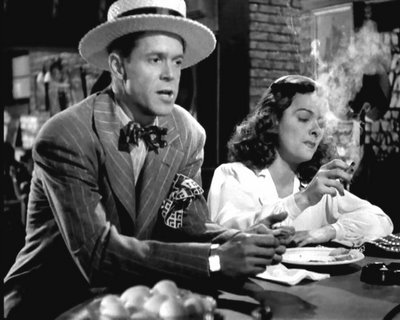
But while Scarlet Street has elements of film noir, it is in reality a black comedy.
While Robinson plays it straight throughout, Bennett and Duryea camp it up marvelously.
Bennett laughs when Robinson claims to be a painter: "And here I had you pegged as a cashier!" She also has to suppress laughter when Robinson reveals that he is married, and shock when Duryea passes her off as the mysterious painter.
_01.jpg)
Then in 1951 Bennett became involved in one of the biggest scandals of the decade. She and her agent, Jennings Lang, were in a parked car "discussing business" when Bennett’s husband, producer Walter Wanger,

discovered them and shot Lang in the "groin," as the LA press coined it. The resulting scandal sent Wanger to prison and caused Bennett to be virtually blacklisted in Hollywood. (Bennett denied any romance, and she and Wanger remained married until 1965.)
Bennett's friend Humphrey Bogart insisted that she be his leading lady in We're No Angels, but due to the scandal and her advancing age her film career was over. Bennett’s career entered a new phase when she was cast in the Gothic TV soap Dark Shadows, which ran 5 years and earned her an Emmy nomination. Bennett died in 1990 at the age of 80.
Bennett's four films with Fritz Lang and her other 1940s work are a living testament to the beauty and talent of this lovely lady. If you have to rent one DVD from her career check out The Woman In The Window. It is a classic and more than enough to justify Bennett’s position as one of the great Hollywood stars.
Monday 29 August 2011
Sunday 28 August 2011
turkish kepab

| This kebab recipe is a staple of Middle Eastern cuisine. Cut up little pieces of lamb and fill the soft pita with fresh veggies and serve! It's a great meal to take with you or prepare for lunch. And the best part, you'll smell like juicy lamb all day! |
norway

 toast cream cheese dill and fresh smoked salmon
toast cream cheese dill and fresh smoked salmondress by oasis at 60 pounds
 this is not a great store for clothes but this is a possible must have
this is not a great store for clothes but this is a possible must havein like flynn
Errol Flynn was born in Hobart, Tasmania, where his father, Theodore Thomson Flynn, was a lecturer (1909) and later professor (1911) of biology at the University of Tasmania (UTAS). Flynn was born at the Queen Alexandra Hospital in Battery Point. His mother was born Lily Mary Young, but dropped the first names Lily Mary shortly after she was married and changed her name to Marelle.
Flynn was born at the Queen Alexandra Hospital in Battery Point. His mother was born Lily Mary Young, but dropped the first names Lily Mary shortly after she was married and changed her name to Marelle.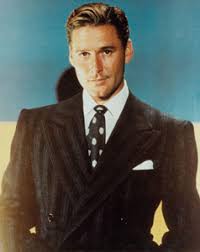 Flynn described his mother's family as "seafaring folk"[ and this appears to be where his life-long interest in boats and the sea originated. Despite Flynn's claims, the evidence indicates that he was not descended from any of the Bounty mutineers. Married at St John's Church of England, Balmain North, Sydney, on 23 January 1909,
Flynn described his mother's family as "seafaring folk"[ and this appears to be where his life-long interest in boats and the sea originated. Despite Flynn's claims, the evidence indicates that he was not descended from any of the Bounty mutineers. Married at St John's Church of England, Balmain North, Sydney, on 23 January 1909, [7both of his parents were native-born Australians of Irish, English and Scottish descent, with convict links to Tasmania long before Flynn's birth Flynn, living at Mclean Avenue Chatswood, Sydney in 1926, attended Sydney Church of England Grammar School (Shore School)[
[7both of his parents were native-born Australians of Irish, English and Scottish descent, with convict links to Tasmania long before Flynn's birth Flynn, living at Mclean Avenue Chatswood, Sydney in 1926, attended Sydney Church of England Grammar School (Shore School)[
 Flynn was born at the Queen Alexandra Hospital in Battery Point. His mother was born Lily Mary Young, but dropped the first names Lily Mary shortly after she was married and changed her name to Marelle.
Flynn was born at the Queen Alexandra Hospital in Battery Point. His mother was born Lily Mary Young, but dropped the first names Lily Mary shortly after she was married and changed her name to Marelle. [7both of his parents were native-born Australians of Irish, English and Scottish descent, with convict links to Tasmania long before Flynn's birth Flynn, living at Mclean Avenue Chatswood, Sydney in 1926, attended Sydney Church of England Grammar School (Shore School)[
[7both of his parents were native-born Australians of Irish, English and Scottish descent, with convict links to Tasmania long before Flynn's birth Flynn, living at Mclean Avenue Chatswood, Sydney in 1926, attended Sydney Church of England Grammar School (Shore School)[
where he was the classmate of future Australian Prime Minister, John Gorton. He was expelled for fighting and, allegedly, having sex with a school laundress.He was also expelled from several other schools he had attended in Tasmania. At the age of 20 he moved to New Guinea where he bought a tobacco plantation, a business which failed. A copper mining venture in the hills near the Laloki Valley, behind the present national capital, Port Moresby, also failed.

In the early 1930s, Flynn left for the United Kingdom and, in 1933, snagged an acting job with the Northampton repertory company at the town's Royal Theatre, where he worked for seven months. He also performed at the 1934 Malvern Festival and in Glasgow and London's West End]

In 1933, he starred in the Australian film In the Wake of the Bounty, directed by Charles Chauvel, and in 1934 appeared in Murder at Monte Carlo, produced at the Warner Bros. Teddington Studios, UK. This latter film is now considered a lost film. During the filming of Murder at Monte Carlo, Flynn was discovered by a Warner Brothers executive, signed to a contract and immigrated to America as a contract actor.
During the filming of Murder at Monte Carlo, Flynn was discovered by a Warner Brothers executive, signed to a contract and immigrated to America as a contract actor. He became a naturalised citizen of the United States in 1942, eight months after America entered World War II.
He became a naturalised citizen of the United States in 1942, eight months after America entered World War II.
 During the filming of Murder at Monte Carlo, Flynn was discovered by a Warner Brothers executive, signed to a contract and immigrated to America as a contract actor.
During the filming of Murder at Monte Carlo, Flynn was discovered by a Warner Brothers executive, signed to a contract and immigrated to America as a contract actor.
Flynn was an overnight sensation in his first starring role, Captain Blood (1935). Quickly typecast as a swashbuckler, he followed it with The Charge of the Light Brigade (1936). After his appearance as Miles Hendon in The Prince and the Pauper (1937), he was cast in his most celebrated role as Robin Hood in The Adventures of Robin Hood (1938). He went on to appear in The Dawn Patrol (1938) with his close friend David Niven, Dodge City (1939), The Sea Hawk (1940) and Adventures of Don Juan (1948).
Working throughout his career with a cross section of Hollywood's best fight arrangers, Flynn became noted for his fast-paced sword fights as seen in The Adventures of Robin Hood, The Sea Hawk and Captain Blood.
 Flynn co-starred with Olivia de Havilland in eight films: Captain Blood (1935), The Charge of the Light Brigade (1936), The Adventures of Robin Hood (1938), Four's a Crowd (1938), Dodge City (1939), The Private Lives of Elizabeth and Essex (1939), Santa Fe Trail (1940), and They Died with Their Boots On (1941)
Flynn co-starred with Olivia de Havilland in eight films: Captain Blood (1935), The Charge of the Light Brigade (1936), The Adventures of Robin Hood (1938), Four's a Crowd (1938), Dodge City (1939), The Private Lives of Elizabeth and Essex (1939), Santa Fe Trail (1940), and They Died with Their Boots On (1941)While Flynn acknowledged his attraction to de Havilland, film historian Rudy Behlmer's assertions that they were romantically involved during the filming of Robin Hood (see the Special Edition of Robin Hood on DVD, 2003) have been disputed by de Havilland. In an interview for Turner Classic Movies, she said that their relationship was platonic, mostly because Flynn was already married to Lili Damita. The Adventures of Robin Hood was Flynn's first film in Technicolor.
In an interview for Turner Classic Movies, she said that their relationship was platonic, mostly because Flynn was already married to Lili Damita. The Adventures of Robin Hood was Flynn's first film in Technicolor.
 In an interview for Turner Classic Movies, she said that their relationship was platonic, mostly because Flynn was already married to Lili Damita. The Adventures of Robin Hood was Flynn's first film in Technicolor.
In an interview for Turner Classic Movies, she said that their relationship was platonic, mostly because Flynn was already married to Lili Damita. The Adventures of Robin Hood was Flynn's first film in Technicolor.
During the shooting of The Private Lives of Elizabeth and Essex (1939), Flynn and co-star Bette Davis quarrelled off-screen, causing Davis to allegedly strike him harder than necessary while filming a scene. Although their relationship was always strained, Warner Bros. co-starred them twice. Their off-screen relationship was later resolved. A contract was even drawn up to lend them out for the roles of Rhett Butler and Scarlett O'Hara in Gone with the Wind, but that prospect failed to materialise.
Flynn was a member of the Hollywood Cricket Club with David Niven. His suave, debonair, and devil-may-care attitude toward both ladies and life has been immortalised in the English language by author Benjamin S. Johnson as, "Errolesque," in his treatise on the subject, An Errolesque Philosophy on Life.When Flynn became a naturalised American citizen on 15 August 1942, he also became eligible for the military draft, as the United States had entered World War II eight months earlier. Grateful to the country that had given him fame and wealth, Flynn attempted to join every branch of the armed services. But Flynn had several health problems. His heart was enlarged, with a murmur, and he'd already suffered at least one heart attack.  That was not all: he had recurrent malaria (contracted in New Guinea), chronic back pain (for which he self-medicated with morphine and later, with heroin), lingering chronic tuberculosis, and numerous venereal diseases. Flynn, famous for his athletic roles and promoted as a paragon of physical beauty, was classified – unqualified for military service for not meeting the physical fitness standards.
That was not all: he had recurrent malaria (contracted in New Guinea), chronic back pain (for which he self-medicated with morphine and later, with heroin), lingering chronic tuberculosis, and numerous venereal diseases. Flynn, famous for his athletic roles and promoted as a paragon of physical beauty, was classified – unqualified for military service for not meeting the physical fitness standards.

This created a public image problem for both Flynn and Warner Brothers. Flynn was often criticised for his failure to enlist while continuing to play war heroes in films. The studios' failure to counter the criticism was due to a desire to hide the state of Flynn's health.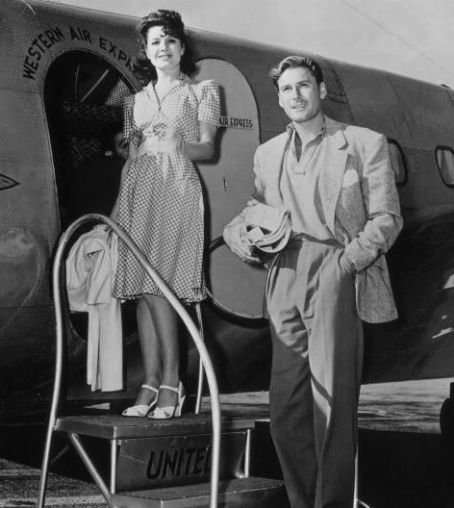

By the 1950s, Flynn had become a parody of himself. Heavy alcohol and drug abuse left him prematurely aged and bloated, but he won acclaim as a drunken ne'er-do-well in The Sun Also Rises (1957), and as his idol John Barrymore in Too Much, Too Soon (1958).  As a curious postscript to his life of adventure, Flynn went to Cuba in late 1958 to meet with the rebel leader Fidel Castro.
As a curious postscript to his life of adventure, Flynn went to Cuba in late 1958 to meet with the rebel leader Fidel Castro.  Flynn was a great supporter of Castro and narrated a short movie titled Cuban Story:The Truth About Fidel Castro Revolution,one of his last works as an actor. His autobiography, My Wicked, Wicked Ways, was published shortly after his death and contains humorous anecdotes about Hollywood.
Flynn was a great supporter of Castro and narrated a short movie titled Cuban Story:The Truth About Fidel Castro Revolution,one of his last works as an actor. His autobiography, My Wicked, Wicked Ways, was published shortly after his death and contains humorous anecdotes about Hollywood.  According to one literary critic, the book "remains one of the most compelling and appalling autobiographies written by a Hollywood star, or anyone else for that matter".Flynn wanted to call the book In Like Me, but the publisher refused. In 1984, CBS produced a television film based on Flynn's autobiography, starring Duncan Regehr as Flynn.
According to one literary critic, the book "remains one of the most compelling and appalling autobiographies written by a Hollywood star, or anyone else for that matter".Flynn wanted to call the book In Like Me, but the publisher refused. In 1984, CBS produced a television film based on Flynn's autobiography, starring Duncan Regehr as Flynn.
 As a curious postscript to his life of adventure, Flynn went to Cuba in late 1958 to meet with the rebel leader Fidel Castro.
As a curious postscript to his life of adventure, Flynn went to Cuba in late 1958 to meet with the rebel leader Fidel Castro.  Flynn was a great supporter of Castro and narrated a short movie titled Cuban Story:The Truth About Fidel Castro Revolution,one of his last works as an actor. His autobiography, My Wicked, Wicked Ways, was published shortly after his death and contains humorous anecdotes about Hollywood.
Flynn was a great supporter of Castro and narrated a short movie titled Cuban Story:The Truth About Fidel Castro Revolution,one of his last works as an actor. His autobiography, My Wicked, Wicked Ways, was published shortly after his death and contains humorous anecdotes about Hollywood.  According to one literary critic, the book "remains one of the most compelling and appalling autobiographies written by a Hollywood star, or anyone else for that matter".Flynn wanted to call the book In Like Me, but the publisher refused. In 1984, CBS produced a television film based on Flynn's autobiography, starring Duncan Regehr as Flynn.
According to one literary critic, the book "remains one of the most compelling and appalling autobiographies written by a Hollywood star, or anyone else for that matter".Flynn wanted to call the book In Like Me, but the publisher refused. In 1984, CBS produced a television film based on Flynn's autobiography, starring Duncan Regehr as Flynn.
Flynn starred in a 1956 anthology series The Errol Flynn Theatre that was filmed in England, where he presented the episodes and sometimes appeared in them. About this time he also guest starred on NBC's comedy/variety show, The Martha Raye Show.
Flynn and Beverly Aadland met with Stanley Kubrick to discuss appearing together in Lolita.
Flynn's adventure novel Showdown, was published in 1946. His first book, Beam Ends, an autobiographical account of his sailing trips around Australia, had been published in 1937.
Flynn had a reputation for womanising, consumption of alcohol and brawling. His freewheeling, hedonistic lifestyle caught up with him in November 1942 when two under-age girls, Betty Hansen and Peggy Satterlee, accused him of statutory rape.
 A group was organised to support Flynn, named the American Boys' Club for the Defense of Errol Flynn (ABCDEF); its members included William F. Buckley, Jr The trial took place in January and February 1943, and Flynn was cleared of the charges. The incident served to increase his reputation as a ladies' man, which led to the popular phrase "in like Flynn."
A group was organised to support Flynn, named the American Boys' Club for the Defense of Errol Flynn (ABCDEF); its members included William F. Buckley, Jr The trial took place in January and February 1943, and Flynn was cleared of the charges. The incident served to increase his reputation as a ladies' man, which led to the popular phrase "in like Flynn."
Flynn was married three times: to actress Lili Damita
 from 1935 until 1942 (one son, Sean Flynn, born 1941, reported missing in Cambodia in 1970 and presumed dead); to Nora Eddington from 1943 until 1949 (two daughters, Deirdre born 1945 and Rory born 1947); and to actress Patrice Wymore from 1950 until his death (one daughter, Arnella Roma, 1953–98). In Hollywood, he tended to refer to himself as Irish rather than Australian (his father Theodore Thomson Flynn had been a biologist and a professor at the Queen's University of Belfast in Northern Ireland during the latter part of his career). Flynn lived with Wymore in Port Antonio, Jamaica in the 1950s. He was largely responsible for developing tourism to this area, and for a while owned the Titchfield Hotel, which was decorated by the artist Olga Lehmann. He also popularised trips down rivers on bamboo rafts.
from 1935 until 1942 (one son, Sean Flynn, born 1941, reported missing in Cambodia in 1970 and presumed dead); to Nora Eddington from 1943 until 1949 (two daughters, Deirdre born 1945 and Rory born 1947); and to actress Patrice Wymore from 1950 until his death (one daughter, Arnella Roma, 1953–98). In Hollywood, he tended to refer to himself as Irish rather than Australian (his father Theodore Thomson Flynn had been a biologist and a professor at the Queen's University of Belfast in Northern Ireland during the latter part of his career). Flynn lived with Wymore in Port Antonio, Jamaica in the 1950s. He was largely responsible for developing tourism to this area, and for a while owned the Titchfield Hotel, which was decorated by the artist Olga Lehmann. He also popularised trips down rivers on bamboo rafts.Flynn was a long-time friend of the painter Boris Smirnoff, who painted his portrait several times, as well as those of Lili Damita, Patrice Wymore and celebrity friends such as Edward G. Robinson, Jean Harlow, Norma Shearer and Barbara Stanwyck.
In the late 1950s, Flynn met and courted the 15-year-old Beverly Aadland at the Hollywood Professional School, casting her in his final film, Cuban Rebel Girls (1959). According to Aadland, he planned to marry her and move to their new house in Jamaica, but during a trip together to Vancouver, British Columbia, he died of a heart attack at the age of 50.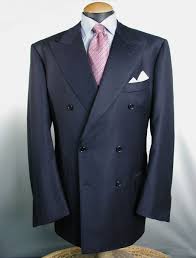
His only son, Sean, an actor and later a noted war correspondent, disappeared in Cambodia in 1970 during the Vietnam War while working as a freelance photojournalist for Time magazine.Flynn was presumed dead in 1971, probably murdered by the communist Khmer Rouge. In 1984, he was officially declared dead in a granted petition of declaration sought by his mother, Lili Damita. Sean's life was recounted in Inherited Risk by Jeffrey Meyers (Simon & Schuster), and he is also mentioned on page 194 in the Colleagues section of Dispatches by Michael Herr.Flynn's daughter Rory has one son, Sean Rio Flynn, named after her half-brother. He is an actor.[Rory Flynn has written a book about her father entitled The Baron of Mulholland: A Daughter Remembers Errol Flynn.
Flynn flew with Aadland to Vancouver on 9 October 1959, to lease his yacht Zaca to millionaire George Caldough. On 14 October, Caldough was driving Flynn to the airport when Flynn felt ill. He was taken to the apartment of Caldough's friend, Dr. Grant Gould, uncle of pianist Glenn Gould. A party ensued, with Flynn regaling guests with stories and impressions. Feeling ill again, he announced "I shall return" and retired to a bedroom to rest. A half hour later, Aadland checked in on him and discovered him unconscious. Flynn had suffered a heart attack. According to the Vancouver Sun (16 December 2006), "When Errol Flynn came to town in 1959 for a week-long binge that ended with him dying in a West End apartment, his local friends propped him up at the Hotel Georgia lounge so that everyone would see him." The story is a myth; following Flynn's death, his body was turned over to a coroner (George Brayshaw), who performed an autopsy, and released his body to his next of kin.
In 1961, Florence Aadland co-authored with Tedd Thomey The Big Love, a book alleging Flynn was involved in a sexual relationship with her 15-year-old daughter, actress Beverly.It was later made into a play starring Tracey Ullman.In 1980, author Charles Higham published a controversial biography, Errol Flynn: The Untold Story, in which he alleged that Flynn was a fascist sympathiser who spied for the Nazis before and during World War The book also alleged he was bisexual.The only problem with this is that bisexuality doesn't exist as a sexual state.In 2000, Higham wrote an article that also claimed that Flynn was previously accused of sympathising with Adolf Hitler based on his association with Dr. Hermann Erben, an Austrian who served in the German military intelligence, and that declassified files held by the CIA show that, in an intercepted letter in September 1933, Flynn wrote to Erben: "A slimy Jew is trying to cheat me… I do wish we could bring Hitler over here to teach these Isaacs a thing or two. The bastards have absolutely no business probity or honour whatsoever."Unreleased MI5 files held by the British Home Office were claimed in 2000 to demonstrate Flynn worked for the Allies during the war. That Flynn was bisexual was also claimed by David Bret in Errol Flynn: Satan's Angel, although Bret denounced the Nazi claims.

Subsequent biographies – notably Tony Thomas' Errol Flynn: The Spy Who Never Was (Citadel, 1990) and Buster Wiles' My Days With Errol Flynn: The Autobiography of a Stuntman (Roundtable, 1988) – have rejected Higham's claims as pure fabrication. Flynn's political leanings, say these biographies, appear to have been leftist: he was a supporter of the Spanish Republic in the Spanish Civil War and of the Cuban Revolution, even narrating a documentary titled Cuban Story[ shortly before his death. Flynn defended his visit to Cuba in an appearance on a Canadian Broadcasting Company television game show Front Page Challenge early in 1959. According to his autobiography, he considered Fidel Castro a close personal friend and drinking partner.
Subscribe to:
Posts (Atom)





